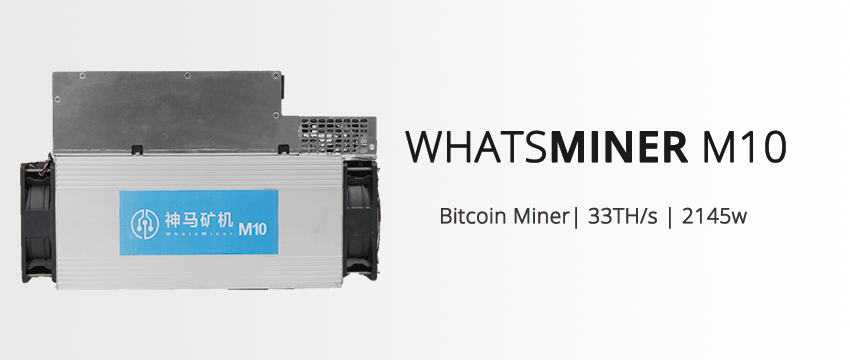WhatsMiner is a manufacturer of cryptocurrency mining hardware founded in July 2016 in Shenzhen, China. Its business incorporates ASIC development, production and sales.
M10 is the model the company released on September 19th 2018 in Shenzhen.
Specifications of M10
| Brand | WhatsMiner |
| Model | WhatsMiner M10 |
| Algorithm | SHA-256 |
| Submodel | 33TH/s @ 2145w |
| Chip | 16nm FinFET, 315 Chips |
| Fan | 2 x fan |
| Power Supply | With PSU, plug & play |
Packaging
- This is how you will receive your order from EastShore. The package weighs 9.6kg
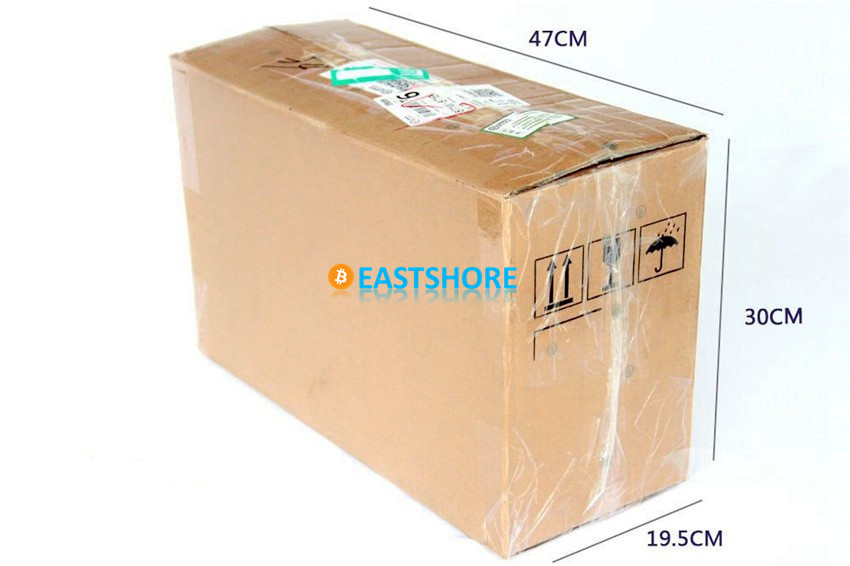
- Power cable included in the package
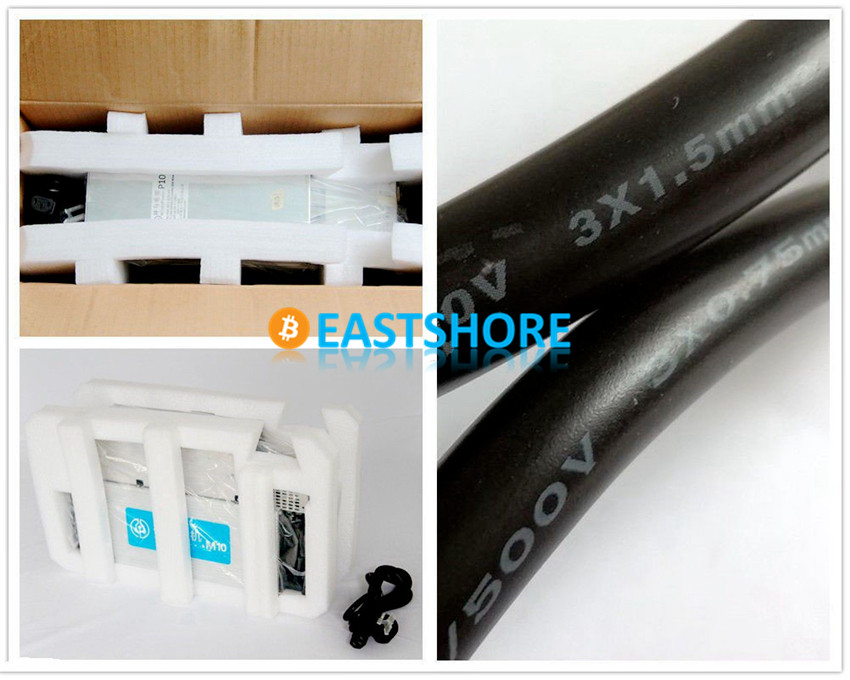
- Specifications of the power cable: 300/500V 3*1.5mm
The Design
- The case is made of aluminum alloy. The power supply is built on top of the miner. The size is 385mm*130mm*210mm. Its net weight is 8.55kg.
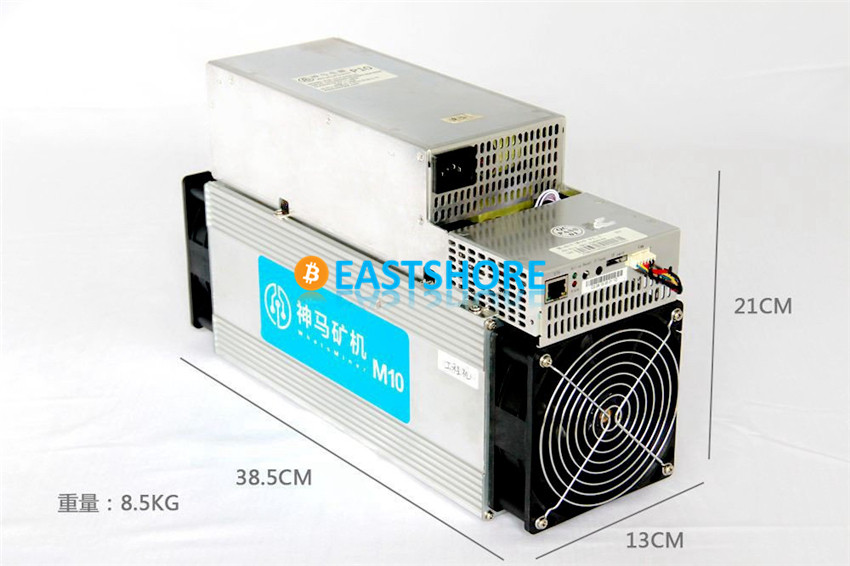
- The front side of the miner
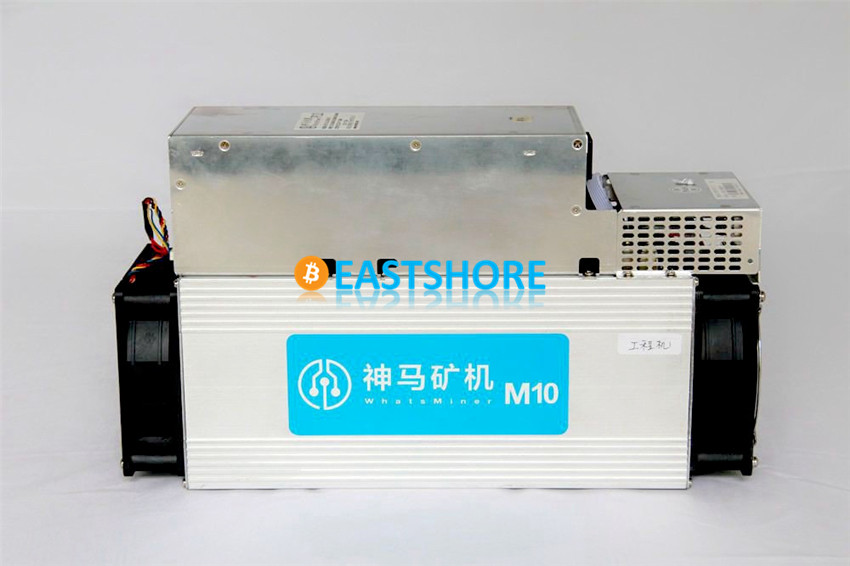
- The air inlet
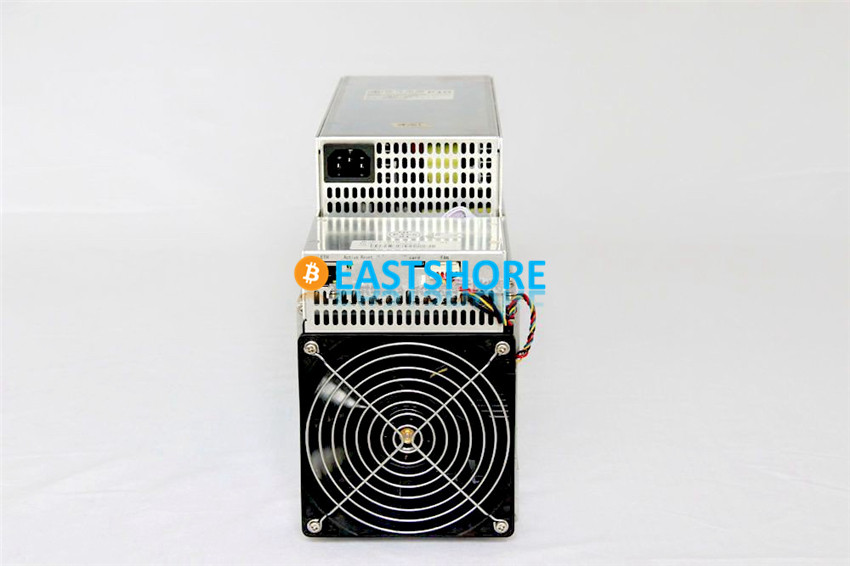
- The back side of the miner
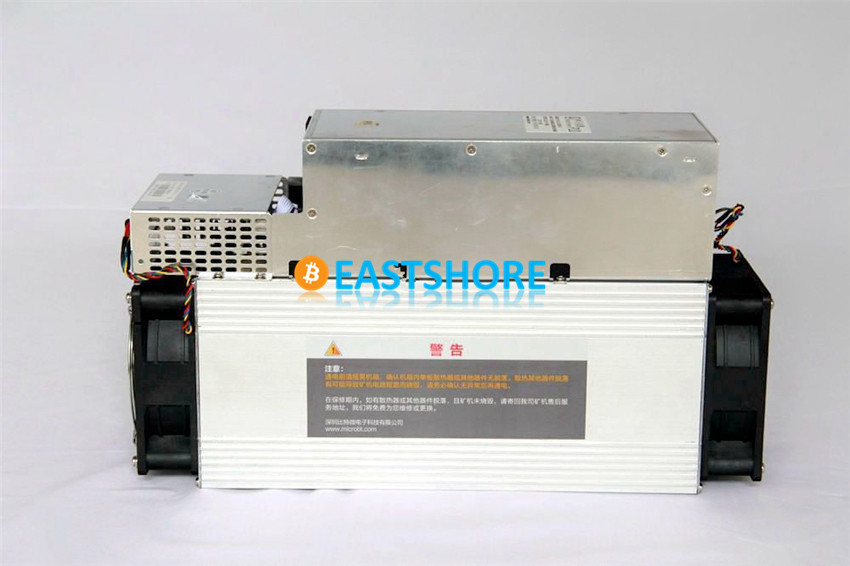
- The air outlet
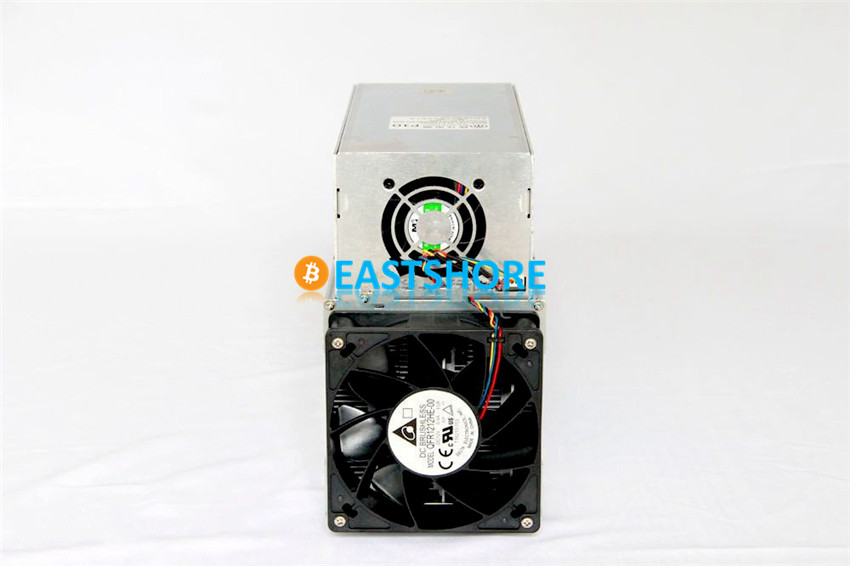
- The power supply model is P10, power rate is 2259w. 12.5V*180A. Two of 6.4A*2 fans.
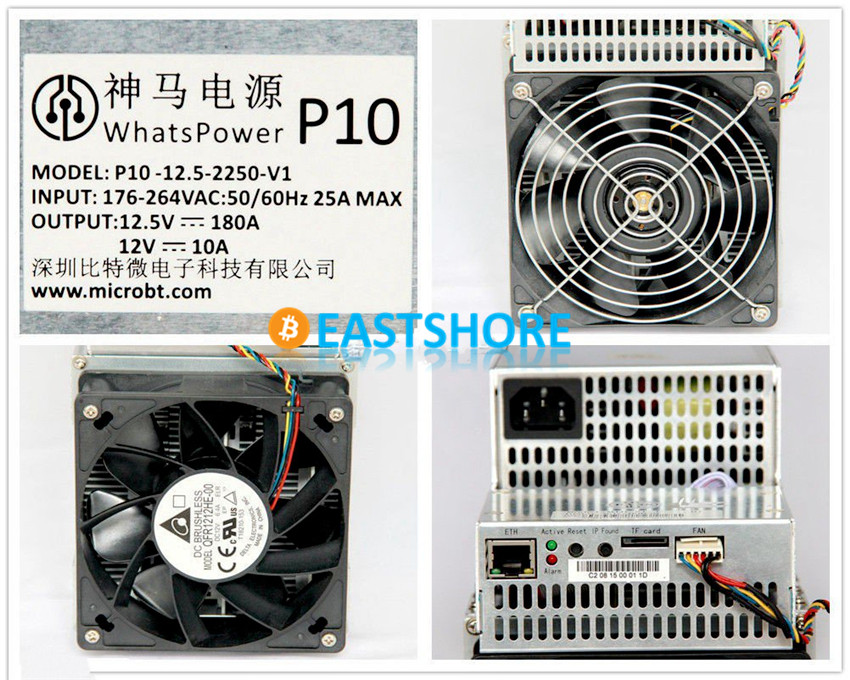
- Ports are indicated as in the following picture.
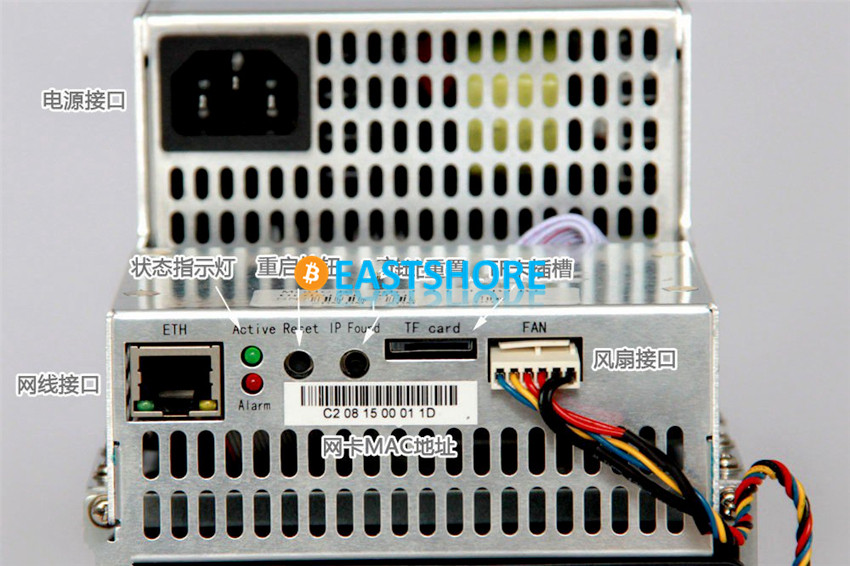
- Unlike other miners that use PCI-E6pin, this power supply is connected directly to the hash board. This way it can take greater electricity currency.
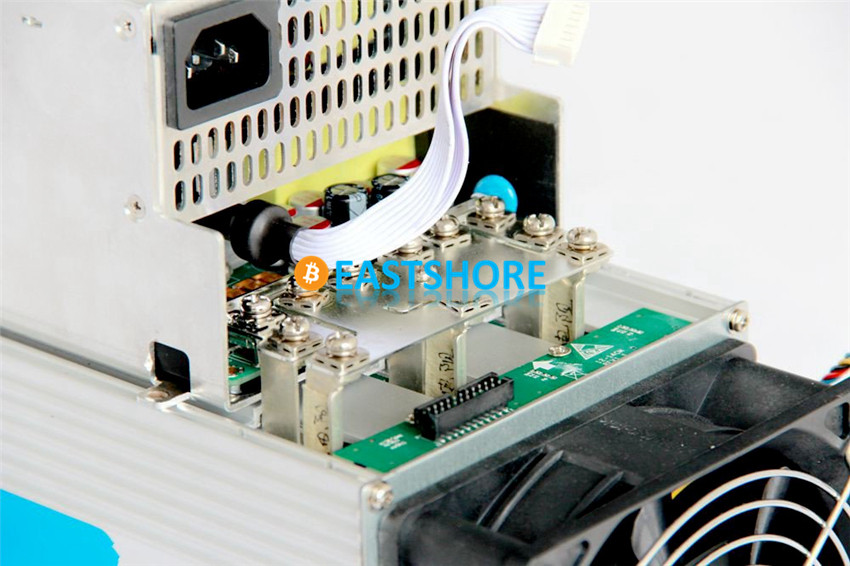
- The controller uses embedded controlling system. Mining software is CGMiner.
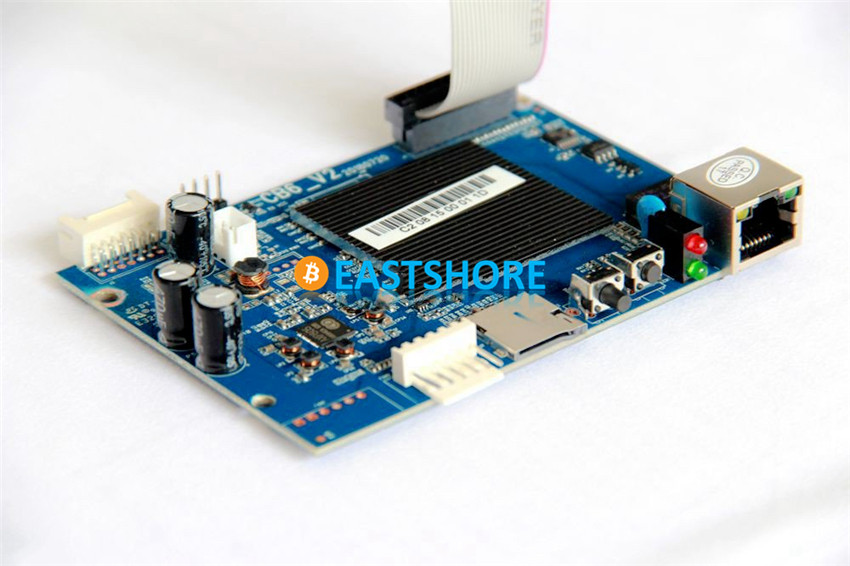
- When disassembled, we can see there are heat sinks on both sides of the hash boards. One side uses 3M heat-conducting glue and the other side silicone grease.
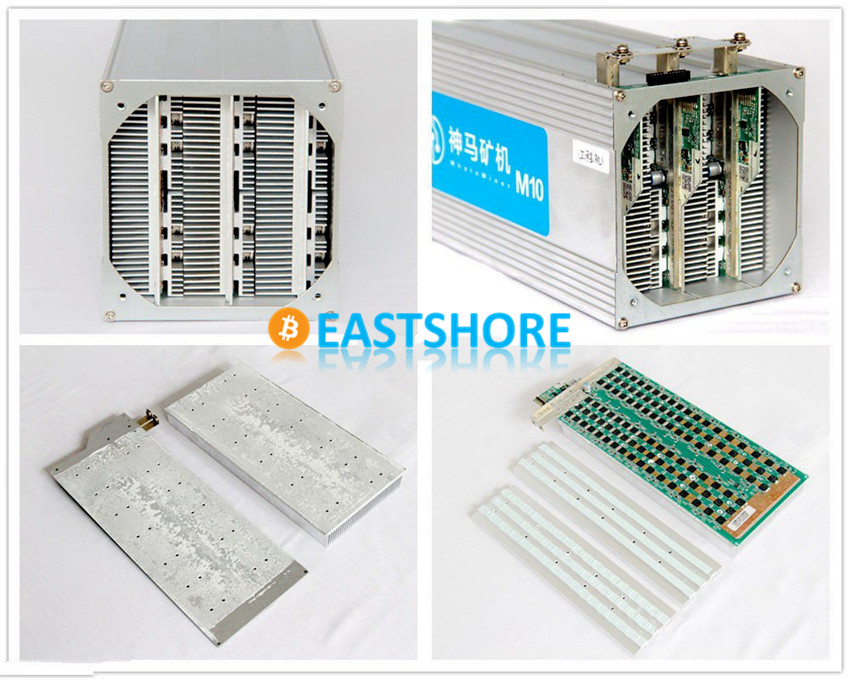
- The hash boards use series-fed power supplying, each of the 3 hash boards has 105 chips which constitutes a hashing rate of 34TH/s for SHA256 algorithm.
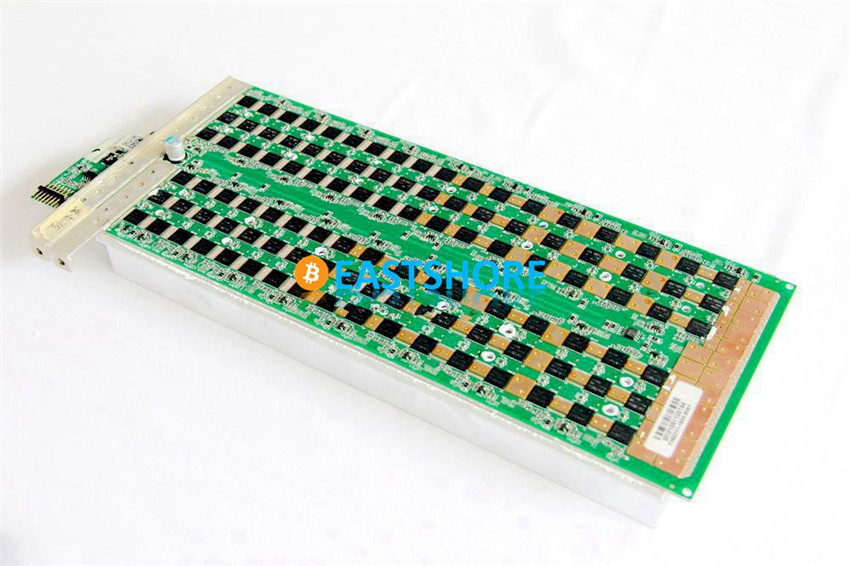
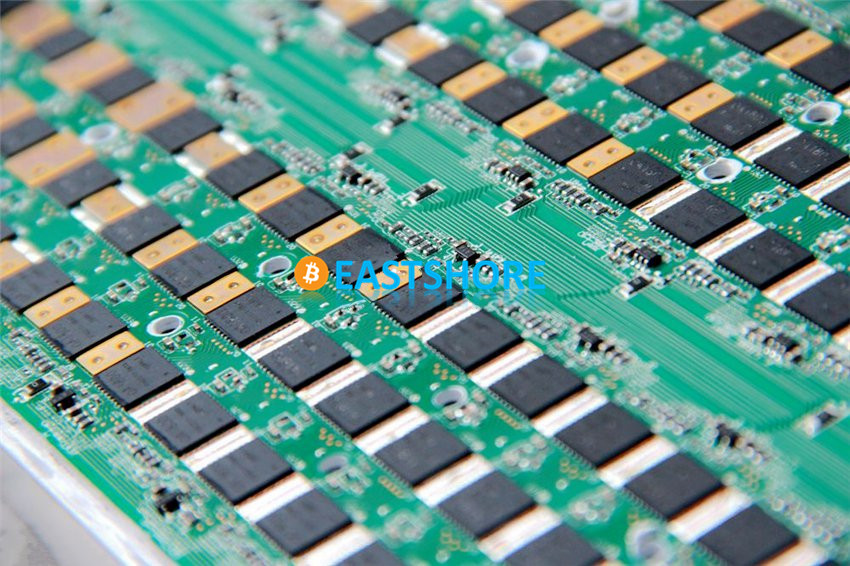
- Components of the miner when disassembled. (We are doing this for demonstrating the construction of the miner. It’s not recommended to disassemble your miner. It will void the warranty.)
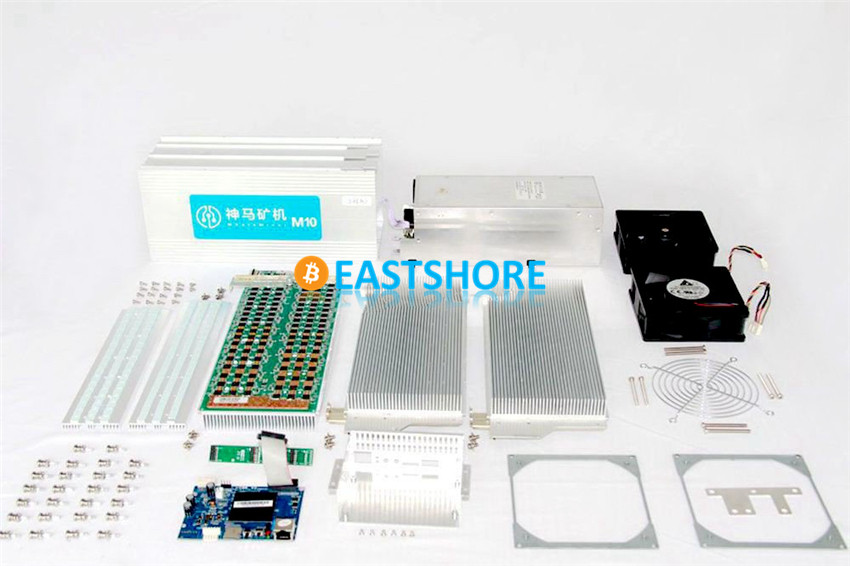
Tutorial for setting up
- Step1: Connect the power cable and the ethernet cord to the miner.
- Step 2: Find the IP of the miner. Refer to this article to find the IP of the miner: How to scan out the configuration IP address of the miner
- Step 3:Access the miner status page. Run your Internet browser, type in the IP address, and log in. Default account and password both are: root
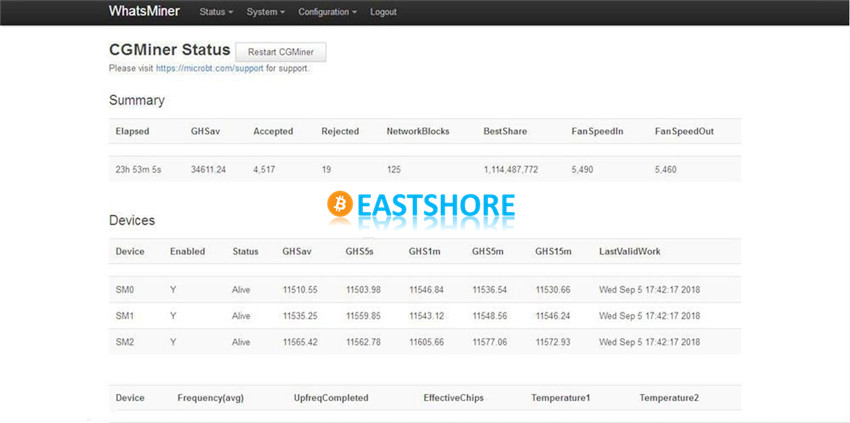
- Step4:Change the pool address and miner account. Click “Configuration -> CGMiner Configuration” to enter the configuration page and make the following changes:
- Pool 1: pool address
- Pool 1 worker: (refer to the pool instructions)
- Pool 1 password: any password
- Step 5:Change the IP address (For mining farms. You don’t need to do this step if you are home mining. ). Access the “Configuration -> Interfaces” page and click “edit” to set the IP address as static. Settings done. Go back to “Status/CGMiner Status”.
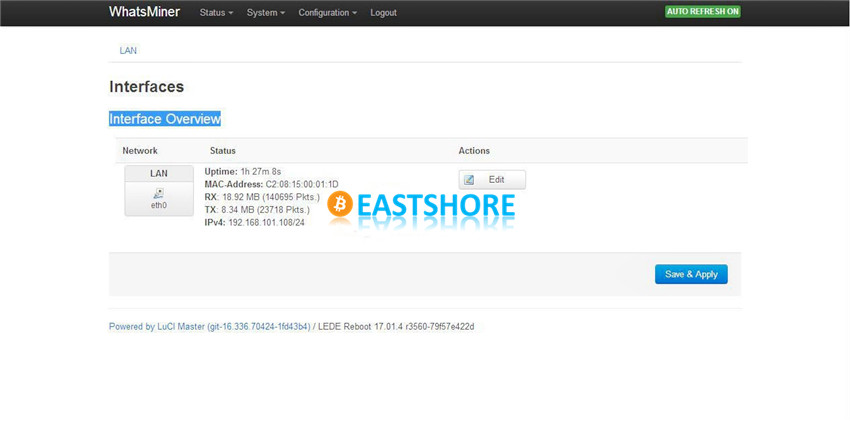
Test Run
- Room temperature 25℃, noise level 45dB. After powering on, the noise level is 92dB. Stand-by (not working yet) power consumption 17w.
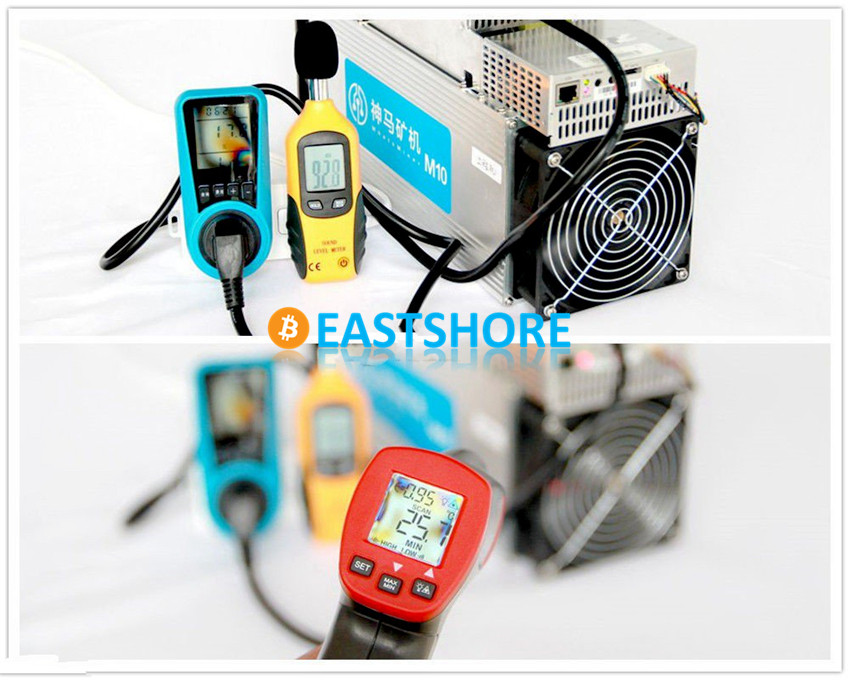
- Connect the ethernet cord and the miner starts working. In about 10 minutes, it performs steadily.
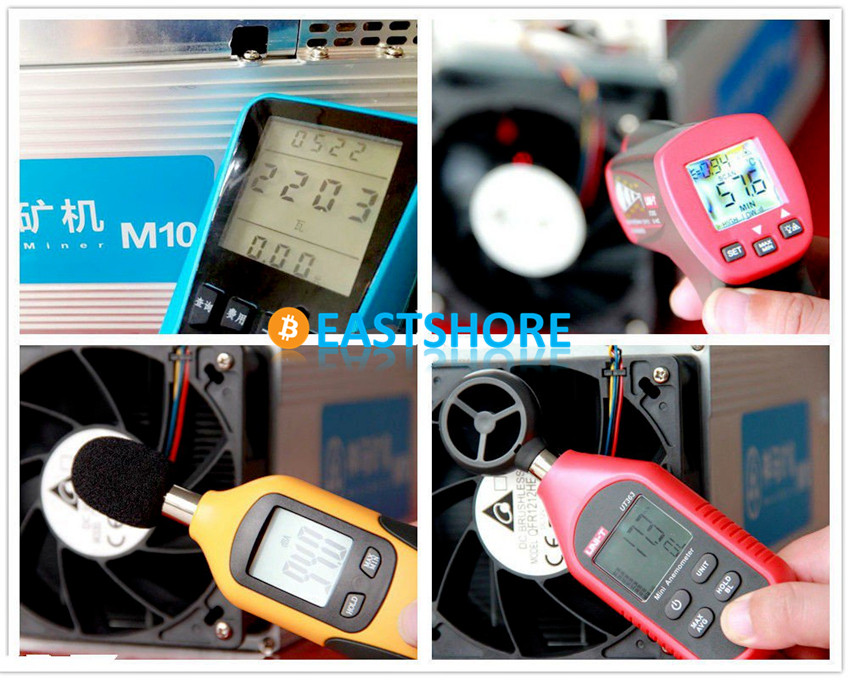
- According to our test run, the power consumption is within a range of 2200w-2205w, noise level within 90dB-94dB.
- The average temperature at the air input is 26℃, and the body temperature of the miner is 48℃, air output temperature is only 58℃. Air velocity at the air output is 17.3m/s.
- After working for 24 hours in the F2pool, it’s performance is steady. Average hash rate is 34.2TH.
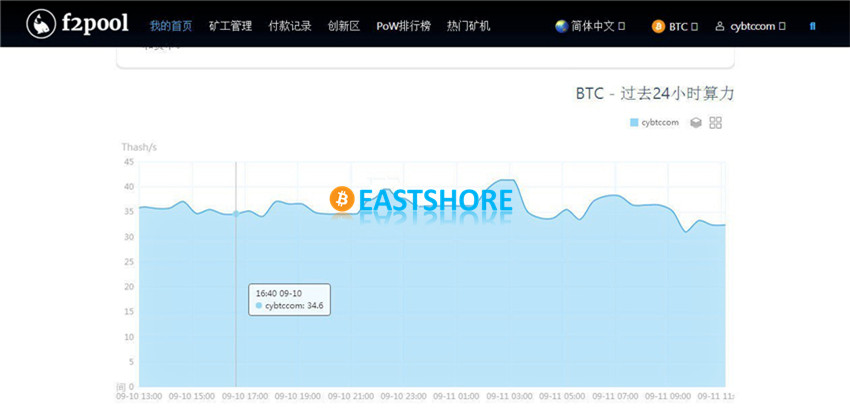

- Steady performance indicated in the “CGMiner Status” page.
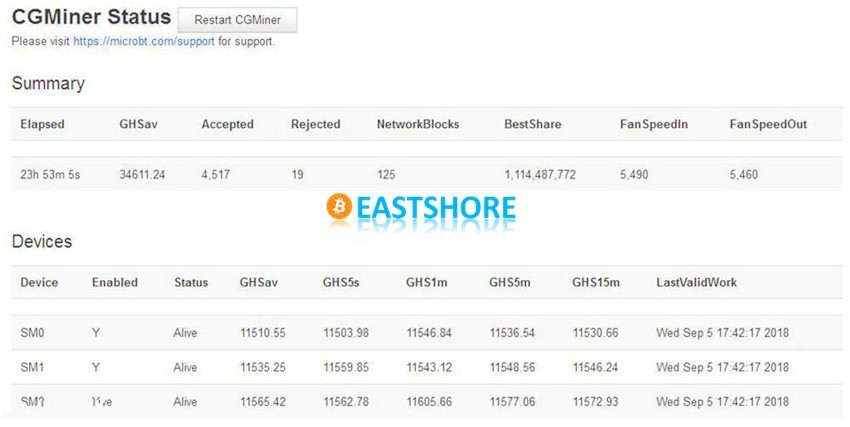
Conclusion
- The design of built-on power supply, makes connection easier and cuts power loss.
- With an average hash rate of 34TH at a power consumption of 2200w, the ratio is good.
- Warranty is 180 days.
- Performance is steady.
Some tips
As the power consumption is 2200w, it’s recommended to use 16A sockets, not 10A ones.

